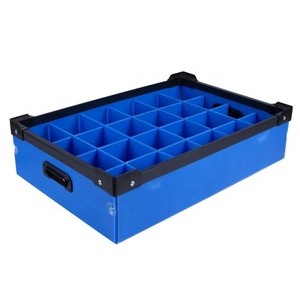
Shipping Corrugated Plastic Box Multi-function PP Corrugated Plastic Foldable Storage Box With Partition Sheet



An insect box is a purpose-built habitat for the containment, propagation, and exhibition of a variety of insects. These enclosures fulfill a range of functions, from facilitating scientific study to providing eco-friendly pest management solutions. Available in a plethora of materials and designs, insect boxes meet the demands of entomologists, enthusiasts, and those in pursuit of natural pest deterrents.
Variety abounds in the realm of insect boxes, with each model tailored to suit specific species and objectives. For instance, bee box types range from rudimentary wooden domiciles to intricate habitats featuring several compartments for honey storage and larval development. Butterfly in shadow boxes are crafted with an eye for design, often incorporating a transparent front for viewing purposes. For residential pest mitigation, contraptions aimed at box elder bugs in home settings are engineered with precise lures and traps for effective containment. Insect collection boxes, equipped with foam for pinning specimens, are indispensable tools for both novice and seasoned entomologists.
The construction of an insect box is critical to its functionality. A box elder beetle trap, for example, might employ a pheromone attractant to draw insects into an inescapable enclosure. The architecture of a bee box is typically more elaborate, often encompassing a series of frames for comb construction and a designated area for the queen's egg-laying. Ventilation is ingeniously crafted to replicate natural air currents while barring predators.
Materials such as acrylic are selected for insect display boxes due to their clarity and durability, permitting unobtrusive observation. Metals, commonly utilized in the frameworks of bee boxes, ensure resilience and are capable of enduring outdoor conditions. Lightweight plastics like PP and PVC are versatile and easily shaped, ideal for bespoke insect boxes that accommodate specific user needs.
In the realm of agriculture, insect boxes are integral to integrated pest management strategies, harboring predatory insects that target crop-damaging pests. Educational entities employ insect collection boxes as didactic aids, illuminating insect life cycles and anatomy for students. Within the hospitality industry, tastefully designed butterfly in shadow boxes are deployed to foster serene and welcoming atmospheres for patrons. These uses not only generate commercial value but also advance environmental stewardship and learning.
Insect boxes are conceived with distinct purposes in mind. A box elder bug trap's role is to curtail the presence of these nuisances in a specific locale. Bee boxes aim to support bee populations, offering a secure setting for reproduction and honey production. Butterfly in shadow boxes serve as ornamental pieces while simultaneously preserving the splendor of butterflies for educational or decorative ends.
A hallmark of insect boxes is their versatility. For instance, addressing box elder bugs in home environments necessitates a distinct strategy compared to agricultural applications. Certain insect boxes boast modular components or modifiable vents to suit these diverse requirements. Their eco-friendly nature, particularly the use of box elder insects for biological pest control, underscores their appeal as alternatives to chemical pesticides.
Employing insect boxes yields a multitude of advantages. They offer a natural approach to managing pests like box elder bugs, which can be bothersome in domestic settings. For pedagogical purposes, they provide an interactive educational experience, enabling close-up insect observation. Ecologically, bee boxes play a pivotal role in plant pollination and bolstering local biodiversity.
To utilize an insect box effectively, one must comprehend the targeted insect's behavior and requirements. For instance, in dealing with box elder bugs in house scenarios, situating the box in a sunlit area where these insects commonly gather enhances trapping efficacy. For a bee box, placement in a low-traffic zone yet in proximity to nectar-abundant flora is crucial.
Choosing an appropriate insect box entails evaluating the specific context. If the objective is to observe and showcase insects like box tree moth caterpillars, a box featuring a transparent acrylic side would be optimal. For pest control, a box equipped with a suitable attractant and trapping mechanism is imperative. The local environment and the habits of the intended insects must also be taken into account.
Consistent upkeep is essential for the durability and efficacy of an insect box. This includes the removal of deceased insects, waste clearance, and maintaining an environment conducive to the living specimens. For instance, bee boxes necessitate the occasional extraction of old combs to avert disease and facilitate new comb formation.
The installation procedure for an insect box varies with its design and intended use. A box elder beetle trap is best set up at the onset of warmer weather when the insects begin to appear. Conversely, a bee box should be installed in early spring, aligning with the commencement of the bees' foraging activities. Proper installation is paramount to ensure the box's stability and the thriving of its insect inhabitants.